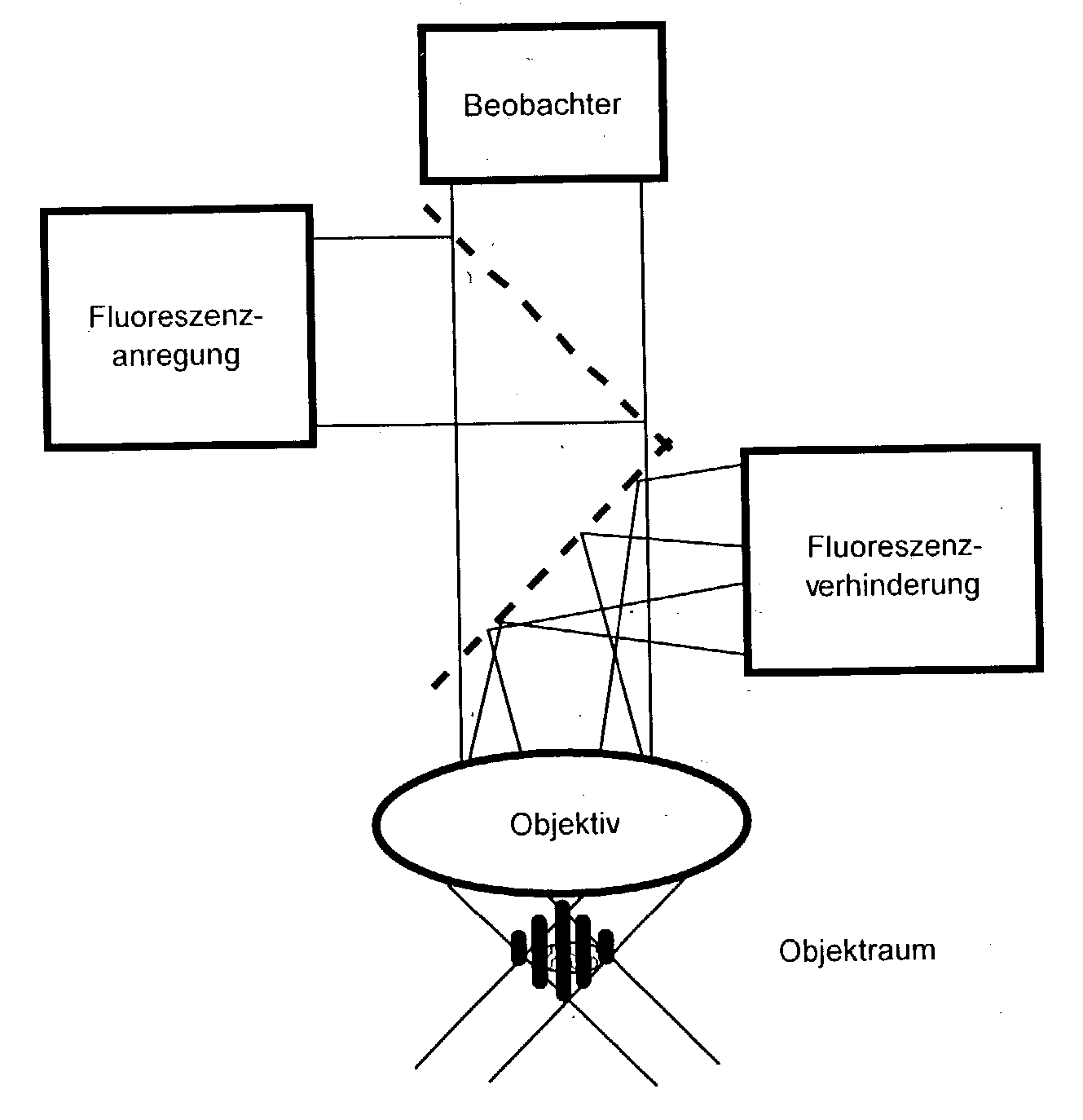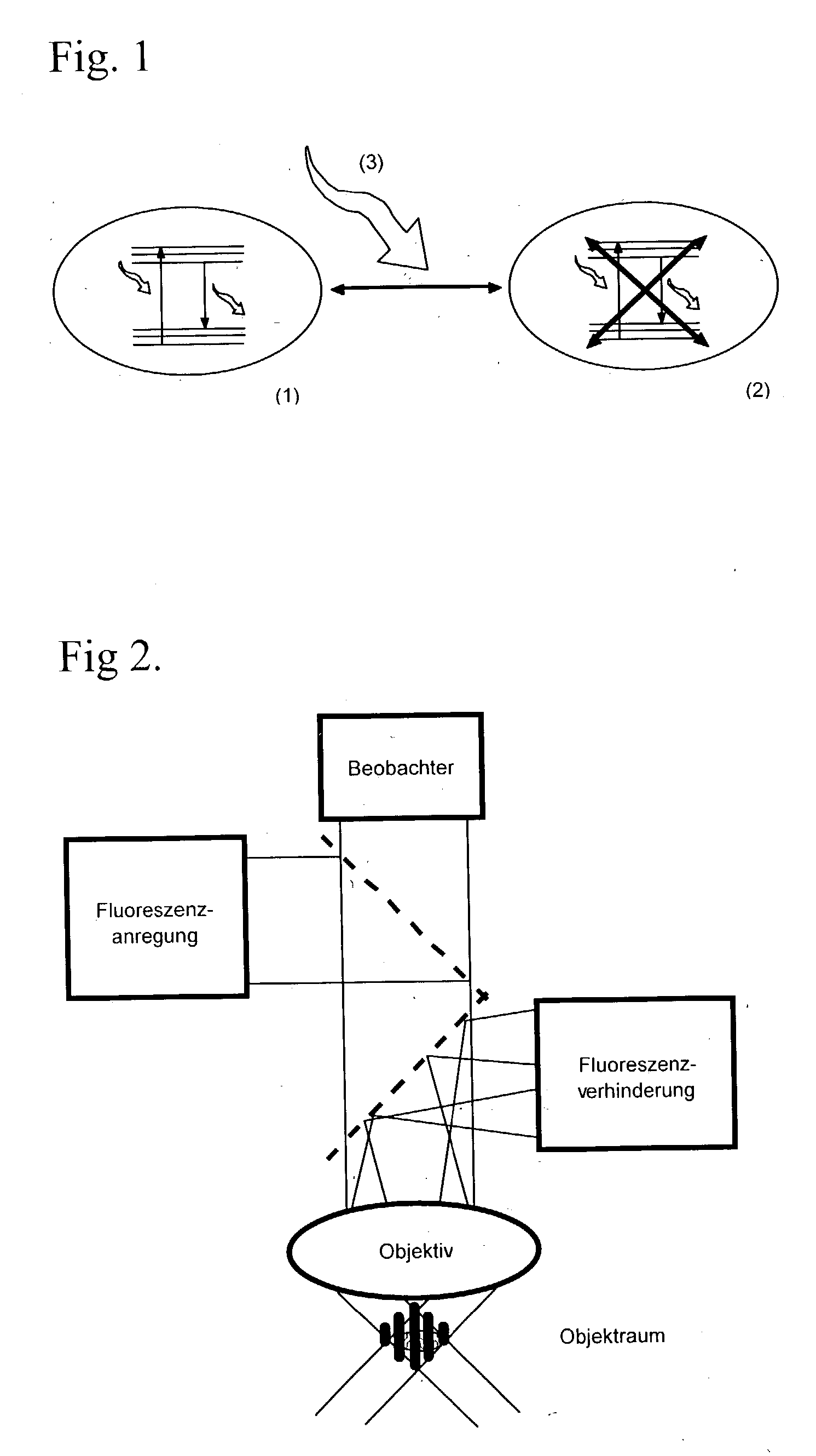High spatial resoulution imaging and modification of structures
a high-spatial resoulution and structure technology, applied in the direction of optical radiation measurement, spectrophotometry/monochromator, spectrometry/spectrophotometry/monochromator, etc., can solve the problems of inability to easily focus light with a wave length of 250 nm, inefficient optics, and high cost of application of known methods, so as to improve the resolution and speed up the procedure , the effect of simple phase shi
- Summary
- Abstract
- Description
- Claims
- Application Information
AI Technical Summary
Benefits of technology
Problems solved by technology
Method used
Image
Examples
Embodiment Construction
[0015] Using substances having two states with different optical properties is a common feature of all aspects of the invention. Further, the substance can purposefully be switched with a switch over signal from the first to the second state. This process is reversible. I.e. the substance can also be returned to the first state. The optical properties of the substance in the first state differ from those in the second state in that only they support the measurement signal or the writing signal, respectively. However, it is not necessary that the relevant optical properties are "binary", i.e. it is not necessary that they are present in the one state at 100% and in the other state at 0%. Instead, it is sufficient, if the relevant optical properties show such big differences that at least an essential association of the measurement signal or the writing signal, respectively, to the first state is possible. These states can be two different conformational states of a molecule or a mole...
PUM
| Property | Measurement | Unit |
|---|---|---|
| life time | aaaaa | aaaaa |
| resolution imaging | aaaaa | aaaaa |
| optical measurement | aaaaa | aaaaa |
Abstract
Description
Claims
Application Information
 Login to View More
Login to View More - R&D
- Intellectual Property
- Life Sciences
- Materials
- Tech Scout
- Unparalleled Data Quality
- Higher Quality Content
- 60% Fewer Hallucinations
Browse by: Latest US Patents, China's latest patents, Technical Efficacy Thesaurus, Application Domain, Technology Topic, Popular Technical Reports.
© 2025 PatSnap. All rights reserved.Legal|Privacy policy|Modern Slavery Act Transparency Statement|Sitemap|About US| Contact US: help@patsnap.com


